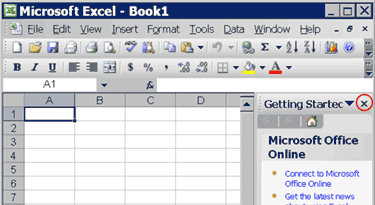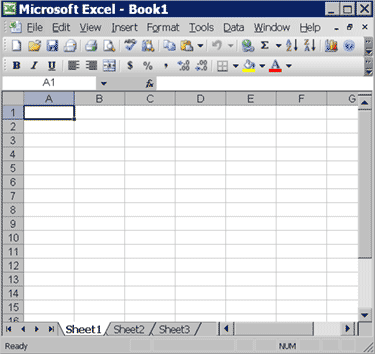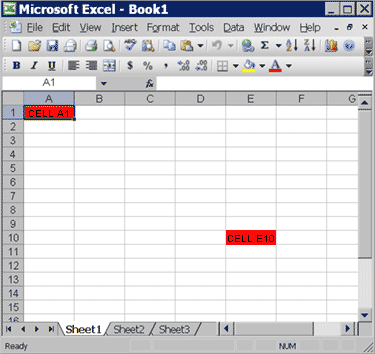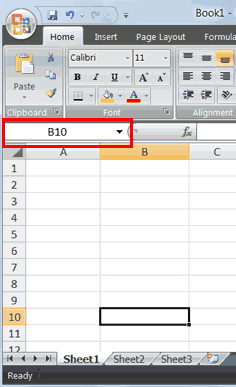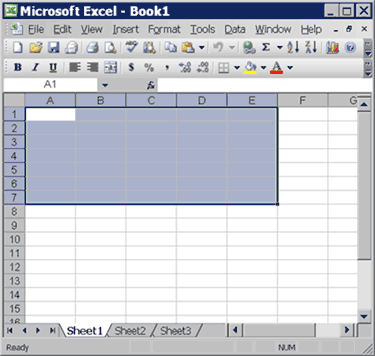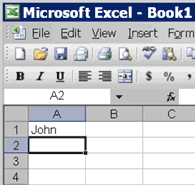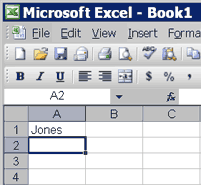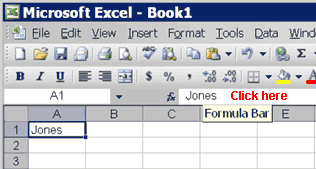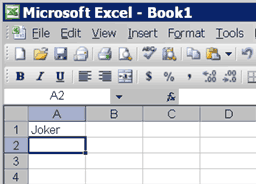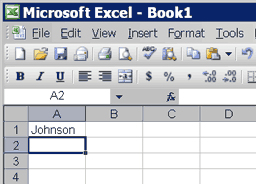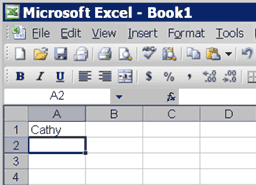1. Which of the following theories focuses on informal organization and participative management ?
(A) Human Relations Theory
(B) Scientific Management Theory
(C) Behavioural Theory
(D) Contingency Theory
Ans : (A)
2. “Until administrative description reaches a higher level of sophistication, there is little reason to hope that rapid progress will be made towards the identification and verification of validadministrative principles.” Who said it ?
(A) Henri Fayol
(B) Leonard White
(C) Herbert Simon
(D) Robert Dahl
Ans : (D)
3. Which of the following attempts to construct a theory of public organization in tune with consumer interests and individual preferences ?
(A) Development Administration Approach
(B) Public Choice Approach
(C) Co-optation Concept
(D) Behavioural Approach
Ans : (B)
4. Who theorized that ‘Every person has certain basic assumptions about other people’s attitude toward work and organization.’ ?
(A) Elton Mayo
(B) Frederick Herzberg
(C) Chris Argyris
(D) Douglas McGregor
Ans : (D)
5. Which of the following has been termed as the biological parent of Public Administration ?
(A) Sociology
(B) Political Science
(C) Business Administration
(D) Psychology
Ans : (B)
6. The central theme of Comparative Public Administration is—
(A) Administrative structure
(B) Bureaucracy
(C) Citizen-Administration Relations
(D) Leadership
Ans : (B)
7. Match the List-I with List-II and select the correct answer :
List-I (Theme)
(a) Job Enrichment
(b) Mechanical Study of the Process
(c) Human Dimensions
(d) Social Equity Attitude
List-II (Thinker)
1. D. Waldo
2. W. F. Willoughby
3. F. Herzberg
4. Herbert Simon
Codes :
(a) (b) (c) (d)
(A) 3 2 1 4
(B) 4 3 2 1
(C) 3 2 4 1
(D) 2 4 1 3
Ans : (A)
8. The most preferred perspective to distinguish public and private in administration is—
(A) Agency
(B) Interest
(C) Access
(D) Commitment
Ans : (B)
9. “Lack of courage to delegate properly and of knowledge how to do it is one of the most general causes of failure in organization.” Who said it ?
(A) Henri Fayol
(B) Lyndall Urwick
(C) Paul H. Appleby
(D) Dwight Waldo
Ans : (A)
10. Who was the Chairman of the Comparative Administration Group 1963 ?
(A) Herbert Simon
(B) Robert Dahl
(C) Fred Riggs
(D) Franc Marini
Ans : (C)
11. Politicisation of bureaucracy means—
(A) Responding to the will of the government of every complexion
(B) Sacrificing professional norms for party consideration
(C) Supporting party ideology
(D) Attending party assemblies
Ans : (B)
12. “In the past the man was first. In the future the system will be the first.” Who said it ?
(A) Frederick Taylor
(B) Peter Drucker
(C) Marshall Dimock
(D) Leonard White
Ans : (B)
13. Rensis Likert’s System I is characterised by—
(A) Supportive Leadership
(B) Low Motivation
(C) Self Regulation
(D) Openness
Ans : (B)
14. The basic premise of New Public Management is—
(A) Governments as the primary agent of all social action
(B) Large governmental bureaucracies
(C) More flexible and open governments
(D) Paternal governments
Ans : (C)
15. Match the List-I with List-II and select the correct answer :
List-I
(a) Direct Authority
(b) Delegated Authority
(c) Functional Authority
(d) Personal Authority
List-II
1. Seniority
2. Unbroken line between Issuer and Acceptor
3. An Intermediate Agency between Issuer and Acceptor
4. Intrinsic by special knowledge
Codes :
(a) (b) (c) (d)
(A) 1 2 3 4
(B) 2 1 4 3
(C) 2 3 4 1
(D) 1 3 2 4
Ans : (C)
16. According to Mary Parker Follett, the principles of effective coordination are—
(a) Intellectual Ability
(b) Continuity
(c) Reciprocity
(d) Mutual Consultation
Codes :
(A) (a) and (b)
(B) (a), (b) and (c)
(C) (b) and (c)
(D) (b), (c) and (d)
Ans : (C)
17. Dwight Waldo in his book ‘The Administrative State’ has attacked—
(a) Notion of Unchanging Principles of Administration
(b) Human Emotions in Organization
(c) Narrowness of Values of Economy and Efficiency
(d) Inconsistencies in Methodology used in determining the principles
Codes :
(A) (a), (b) and (d)
(B) (b), (c) and (d)
(C) (a), (c) and (d)
(D) (a), (b) and (c)
Ans : (C)
18. Human Relations Theory believed that the people are—
(A) Economic Men
(B) Homogeneous
(C) Heterogeneous
(D) Atomistic
Ans : (C)
19. Match the List-I with List-II and select the correct answer :
List-I
(a) Substantive Coordination
(b) Internal Coordination
(c) Horizontal Coordination
(d) Procedural Coordination
List-II
1. Between Units in the same level
2. Between different units within the organisation
3. Generalised description of the behaviour and relationship of the members of the organization
4. Content of the organization’s activities
Codes :
(a) (b) (c) (d)
(A) 4 2 1 3
(B) 1 4 2 3
(C) 3 4 1 2
(D) 2 1 3 4
Ans : (A)
20. The linking process for interaction under systems approach does not include—
(A) Communication
(B) Delegation
(C) Balance
(D) Decision Making
Ans : (B)
21. “Work division is the foundation of organization, indeed, the reason for organization.” Who said it ?
(A) Frederick Taylor
(B) Henri Fayol
(C) Luther Gulick
(D) Mary Parker Follett
Ans : (C)
22. The semantic barrier to communication is not—
(A) Environment
(B) Distracting Noise
(C) Distance
(D) Poor Listening Habits
Ans : (C)
23. The Bills which can be introduced but cannot be considered without the prior recommendation of the President is—
(A) Money Bills under Article 110
(B) Financial Bills not consisting solely of matters specified in Article 110
(C) Ordinary Bills involving expenditure from the Consolidated Fund
(D) Bills affecting taxes in which States are interested
Ans : (C)
24. New Public Administration shares this feature with Development Administration—
(A) Effective coordination
(B) Change orientation
(C) Temporal Dimension
(D) Ecological Perspective
Ans : (B)
25. “As long as the study of Public Administration is not comparative, claims for a science of Public Administration is rather hollow.” Who said it ?
(A) Fred Riggs
(B) Max Weber
(C) Robert Dahl
(D) Ferrel Heady
Ans : (C)
26. In Britain the ‘Priestly formula’ relates to—
(A) Recruitment
(B) Promotion
(C) Pay
(D) Disciplinary Action
Ans : (B)
27. Whitley Council in UK is not a forum for—
(A) Discussion and Negotiation
(B) Ventilation of Grievances
(C) Settlement of Disputes on Service Conditions
(D) Settlement of Individual cases relating to Promotion & Disciplinary Action
Ans : (D)
28. “Neutral bureaucracy can be found only in a secular political culture.” Who said it ?
(A) M. E. Dimock
(B) Glenn Stahl
(C) G. A. Almond
(D) Max Weber
Ans : (C)
29. Match the List-I with List-II and select the correct answer :
List-I (Concept)
(a) Monte Carlo
(b) Gambler
(c) Synetics
(d) Contract
List-II (Meaning)
1. Generation of Alternative Solutions
2. Narrow Form of Simulation
3. Formal Basis of Authority
4. To take Greater Risk
Codes :
(a) (b) (c) (d)
(A) 2 4 1 3
(B) 2 1 3 4
(C) 1 4 2 3
(D) 4 1 3 2
Ans : (C)
30. The most effective means of citizens’ control over administration is—
(A) Elections
(B) Pressure Groups
(C) Advisory Committees
(D) Public Opinion
Ans : (A)
31. The U.S. President’s principal staff agency in fiscal, legislative and administrative management is—
(A) Bureau of the Budget
(B) The Office of Management and Budget
(C) Department of the Treasury
(D) White House Office
Ans : (B)
32. Which of the following is not a feature of U.S. personnel system ?
(A) Competitive Service
(B) Lateral Entry
(C) Post-entry Training
(D) Rule of Three
Ans : (B)
33. Grants from Centre to the States are regulated by the following Articles of the Constitution—
(A) 268, 269, 270, 272
(B) 270, 271, 274
(C) 273, 275, 282
(D) 275, 282, 287
Ans : (A)
34. The expectancy theory of motivation depends upon the employee’s perception of the relationship between—
(A) Need, Performance and Achievement
(B) Effort, Performance and Reward
(C) Desire, Performance and Response
(D) Preference, Performance and Action
Ans : (B)
35. Who referred the interaction between politicians and administrators as ‘administrative politics’ ?
(A) Michael Murray
(B) Michael Crozier
(C) David Rosenblom
(D) Peter Self
Ans : (D)
36. The techniques applied in performance appraisal in U.S.A. are—
(a) Rating Scale
(b) Critical Incidents
(c) Forced choice
(d) Forced Distribution
Codes :
(A) (a) and (b)
(B) (c) and (d)
(C) (a), (b) and (c)
(D) (a), (b), (c) and (d)
Ans : (D)
37. The political rights granted to the Civil Servants in France are—
(a) Right to become member of a political party
(b) Right to participate in political activities
(c) Right to criticise government’s policies
(d) Right to contest elections to any representative office
Codes :
(A) (a) and (b)
(B) (a), (b) and (d)
(C) (c) and (d)
(D) (a), (b), (c) and (d)
Ans : (D)
38. The functions performed by the then Secretary to the Governor-General before Independence are now performed by—
(A) Chief Secretary
(B) Cabinet Secretariat
(C) Prime Minister’s Office
(D) Ministry of Home Affairs
Ans : (C)
39. Match the List-I with List-II and select the correct answer :
List-I
(a) Economic Man
(b) Decision Tree
(c) Link Pin Concept
(d) Simulation
List-II
1. Trial and Error Approach to Complex Problems
2. Subordinate becomes a Member of the Superior’s Decision Unit
3. Optimum Decision
4. Graphic Method to see Alternative Solutions
Codes :
(a) (b) (c) (d)
(A) 3 4 2 1
(B) 2 1 3 4
(C) 3 4 1 2
(D) 1 3 4 2
Ans : (A)
40. In USA the authority to regulate the formation and dissolution of Federal Departments is vested in—
(A) President
(B) Congress
(C) Constitution
(D) President in consultation with the Secretary of State
Ans : (B)
41. Match the List-I with List-II and select the correct answer :
List-I
(a) Zone of Acceptance
(b) Zone of Indifference
(c) Span of Attention
(d) Scalar chain
List-II
1. Graicunas
2. Henri Fayol
3. Herbert Simon
4. Chester Barnard
Codes :
(a) (b) (c) (d)
(A) 2 3 4 1
(B) 3 4 1 2
(C) 4 3 2 1
(D) 3 2 1 4
Ans : (B)
42. Which of the following, according to Bruce Stone, is not a ‘Bottom-Up’ concept of accountability ?
(A) Parliamentary control
(B) Judicial and Quasi-Judicial Review
(C) Constituency Relationship
(D) Market
Ans : (B)
43. Match the List-I with List-II and select the correct answer :
List-I
(a) Civil Service Commission
(b) Recruitment by Promotion
(c) Open Competition
(d) Centralised Recruitment
List-II
1. 1917
2. 1926
3. 1919
4. 1833
Codes :
(a) (b) (c) (d)
(A) 2 3 1 4
(B) 2 1 4 3
(C) 3 1 2 4
(D) 4 3 1 2
Ans : (B)
44. The concept of Citizens’ Charter as a means to greater accountability and openness was first introduced in 1991 in—
(A) USA
(B) U.K.
(C) France
(D) India
Ans : (B)
45. Which of the following is not an informal training type ?
(A) Training by Communication
(B) Conference Method
(C) Departmental Training
(D) Syndicate Method
Ans : (D)
46. A grant for meeting an unexpected demand is called—
(A) Supplementary Grant
(B) Votes on Account
(C) Votes on Credit
(D) Exceptional Grant
Ans : (D)
47. “Budget is a document which is unstitched and reassembled by the Appropriation Committees of both the Houses.” This statement of Aaron Wildrasky applies to the budget of—
(A) United States of America
(B) United Kingdom
(C) France
(D) India
Ans : (A)
48. The best check on bureaucratic power, according to Weber, lies with—
(A) Powerful Private Groups
(B) Strong Bureaucratic leadership
(C) Strong Parliament
(D) Superior Technical Knowledge of the Chief Executive
Ans : (D)
49. ‘If a society is not at all differentiated, if there are no specialists, if everyone can do everything.’ Riggs calls it a—
(A) Society
(B) Prismatic Society
(C) Diffracted Society
(D) Transitional Society
Ans : (B)
50. Which one is not correctly matched ?
(A) Compromiser—poor decision maker
(B) Executive—good motivator
(C) Bureaucrat—control of situation by rules
(D) Developer—interest in harmony, avoids conflicts
Ans : (B)
51. Match the List-I with List-II and select the correct answer :
List-I (Books)
(a) The New Science of Management decision
(b) Organization and Innovation
(c) The Achieving Society
(d) Eupsychian Management
List-II (Author)
1. David McClelland
2. Abraham Maslow
3. Chris Argyris
4. Herbert Simon
Codes :
(a) (b) (c) (d)
(A) 1 2 3 4
(B) 3 1 4 2
(C) 4 3 1 2
(D) 4 2 3 1
Ans : (C)
52. ‘The bureaucracy is a circle, which no one can escape, its hierarchy is a hierarchy of knowledge.’ Who said it ?
(A) Max Weber
(B) Karl Marx
(C) Blau and Scott
(D) T. Parsons
Ans : (B)
53. Which of the following is an area of Planning Commission ?
(A) Review of the Union and State Finances
(B) Maintaining Macro-economic Stability
(C) Public and Foreign Loans
(D) Suggesting Ways and Means to Restructure Public Finance
Ans : (A)
54. The advantages of a departmental undertaking are—
(a) Optimum Utilisation of Financial Resources
(b) Operational Flexibility
(c) High Degree of Accountability
(d) Autonomy in working
Codes :
(A) (a) and (b)
(B) (a) and (c)
(C) (a), (b) and (d)
(D) (b), (c) and (d)
Ans : (B)
55. Match the List-I with List-II and select the correct answer :
List-I
(a) Endo-prismatic
(b) Exo-prismatic
(c) Ortho prismatic
(d) Diffracted
List-II
1. Semi differentiated and malintegrated
2. Congruence of aspiration and reality
3. Impetus from outside
4. Internally generated movement towards diffraction
Codes :
(a) (b) (c) (d)
(A) 3 2 4 1
(B) 4 3 1 2
(C) 2 4 3 1
(D) 1 2 3 4
Ans : (B)
56. The authority which can make rules for the transaction of the business of the Government of India is—
(A) President
(B) Prime Minister
(C) Parliament
(D) Ministry of Home Affairs
Ans : (A)
57. Match the List-I with List-II and select the correct answer :
List-I (Concept)
(a) Knowledge Worker
(b) Domination by Organization personality
(c) Action-centred Leadership Theory
(d) Organization as Bureaucracy
List-II (Thinkers)
1. John Adair
2. Max Weber
3. Chester Barnard
4. Peter Drucker
Codes :
(a) (b) (c) (d)
(A) 1 2 3 4
(B) 1 3 2 4
(C) 4 3 1 2
(D) 4 3 2 1
Ans : (C)
58. ‘No money shall be withdrawn from the Consolidated Fund except under appropriation made by law.’ This has been provided in—
(A) Article 110
(B) Article 112
(C) Article 113
(D) Article 114
Ans : (D)
59. Match the List-I with List-II and select the correct answer :
List-I
(a) All India Services
(b) Classification of Civil Services
(c) Regulation of Recruitment and Conditions of Service
(d) General Policies Regarding all Central Services
List-II
1. Parliamentary Act
2. Ministry of Personnel, Public Grievances and Pensions
3. Article 312
4. Civil Service Rules 1930
Codes :
(a) (b) (c) (d)
(A) 1 2 3 4
(B) 3 4 1 2
(C) 3 2 4 1
(D) 1 2 4 3
Ans : (B)
60. “Increasing efficiency must begin with those higher ups. This is the essence of scientific management.” Who said it ?
(A) Woodrow Wilson
(B) Louis Brandis
(C) Frederick Taylor
(D) Harrington Emerson
Ans : (D)
61. The conditions necessary to ensure that neutrality does not lead to a state of inertia and status-quo maintenance are—
(a) cultural or class congruence between Ruling group and Administrative elite
(b) absence of fundamental disagreement over social core values
(c) active participation in political process
(d) a shared belief system’s presence
Codes :
(A) (a) and (b)
(B) (a), (c) and (d)
(C) (a), (b) and (c)
(D) (a), (b) and (d)
Ans : (D)
62. Rigg’s concept of development considers penetration as a factor of integration. Consider the following—
(a) The ability of the government to make and carry out decisions.
(b) People’s receptivity to law
(c) People’s will to participate
(d) People’s ability to participate
Which of the above is correct regarding penetration ?
Codes :
(A) (a)
(B) (b) and (d)
(C) (c)
(D) (c) and (d)
Ans : (A)
63. Who recommended that the National Development Council should be given a constitutional status under Article 263 and renamed as National Economic and Development Council ?
(A) Administrative Reforms Commission
(B) Sarkaria Commission
(C) P. J. Rajamannar Committee
(D) Chief Secretary’s Conference
Ans : (B)
64. What falls within the purview of consultation of Union Public Service Commission ?
(a) Direct Appointment
(b) Promotion and Transfer
(c) Pay and Service Conditions
(d) Classification and Training
Codes :
(A) (a) and (b)
(B) (b) and (c)
(C) (a), (b) and (c)
(D) (b), (c) and (d)
Ans : (A)
65. In a State the Chief Secretary acts as—
(a) Principal Adviser to the Governor
(b) Coordinating link in inter-State Disputes
(c) Secretary to the Chief Minister
(d) Chairman of all Planning and Development Coordination Committees
Codes :
(A) (a) and (c)
(B) (c) and (d)
(C) (a), (b) and (c)
(D) (b), (c) and (d)
Ans : (B)
66. Which of the following provided for the appointment of the same person as Governor of two or more States ?
(A) Article 153
(B) Article 155
(C) 7th Constitutional Amendment
(D) 11th Constitutional Amendment
Ans : (C)
67. Audit of State Government Accounts is a—
(A) State Subject
(B) Union Subject
(C) Subject on Concurrent List
(D) Subject of Fiscal Policy
Ans : (B)
68. The body that examines the expenditure of the Departments and questions the propriety of these expenditures is—
(A) Public Accounts Committee
(B) Estimate Committee
(C) Comptroller and Auditor General
(D) Committee on Assurances
Ans : (C)
69. Reappropriation is permissible only—
(A) Between voted and charged items of expenditure
(B) Between different grants voted by the Lok Sabha
(C) Within the same grant only
(D) To meet any expenditure not already sanctioned by the Lok Sabha
Ans : (C)
70. It is a comprehensive account of the receipts and expenditure of the Government under various heads and sub-heads of the Budget—
(A) The Appropriation Account
(B) The Finance Account
(C) Economic Classification of the Budget
(D) Functional Classification of the Budget
Ans : (B)
71. Which of the following statements are true about Lokayukta in Rajasthan ?
(a) He is appointed by the Governor and is responsible to the legislature.
(b) His jurisdiction spans over Ministers, Members of State Legislature and higher Civil Servants.
(c) He considers the cases of corruption and mal administration.
(d) His job is confined to investigate allegations and not grievances.
Codes :
(A) (a) and (d)
(B) (a), (b) and (c)
(C) (a), (b), (c) and (d)
(D) (a) and (c)
Ans : (D)
72. Among the critical dimensions of the leadership situation the most important dimension, according to Fiedler, is—
(A) Position Power
(B) Task Structure
(C) Leader-Member Relations
(D) Least Preferred Co-worker
Ans : (D)
73. Match the List-I with List-II and select the correct answer :
List-I
(a) Citizen’s Charter
(b) Right to Information
(c) Judicial Control
(d) Legislative Control
List-II
1. Total Quality Approach
2. Accountability for Decision
3. Transparency
4. Guarantee against Arbitrariness
Codes :
(a) (b) (c) (d)
(A) 3 4 1 2
(B) 1 2 3 4
(C) 3 1 2 4
(D) 1 3 4 2
Ans : (D)
74. Which one of the following is not a function of the Directorate ?
(A) Formulation of the Budget of the Department
(B) Inspection of the execution of work by Field Officers
(C) Rendering technical advice to the Minister/Secretary
(D) Coordination of interdepartmental functions
Ans : (A)
75. Which of the following is not correctly matched ?
(A) Injunction—Strong arm of equity
(B) Quo Warranto—Prevents illegal assumption of Public Office
(C) Prohibition—Issued against administrative authorities
(D) Habeas Corpus—The bulwark of individual liberty.
Ans : (C)
76. The recommendation to the Union Government for the grant of financial assistance to the States is made by—
(a) The President
(b) The Comptroller and Auditor General of India
(c) The Finance Commission
(d) The Planning Commission
Codes :
(A) (a) and (c)
(B) (b) and (c)
(C) (c) and (d)
(D) (b), (c) and (d)
Ans : (C)
77. “It transforms the representative democracy into participatory democracy.” This statement has a reference to—
(A) Parliamentary System of the Government
(B) Article 40 of the Constitution
(C) 73rd Constitutional Amendment
(D) 74th Constitutional Amendment
Ans : (C)
78. Which of the following is not a corporation form ?
(A) Unit Trust of India
(B) Indian Oil Corporation
(C) Food Corporation of India
(D) State Bank of India
Ans : (B)
79. Which of the following statements are correct about the National Development Council ?
(a) It symbolises a federal approach to planning.
(b) It was set up by a proposal of the Cabinet Secretariat in August 1952.
(c) It was reconstituted in 1968 on the recommendation of the Administrative Reforms Commission.
(d) The initiative to convene its meeting lies with the Planning Commission.
Codes :
(A) (a) and (b)
(B) (a), (b) and (c)
(C) (a), (b) and (d)
(D) (a), (b), (c) and (d)
Ans : (C)
80. For which form of Public Enterprise it is said that “It is a child of the State which grows into maturity as soon as it is born” ?
(A) Departmental Form
(B) Company Form
(C) Corporation Form
(D) Commission Form
Ans : (C)
81. Voluntary provisions of 73rd Constitutional Amendment include—
(A) Three Tier Panchayati Raj Institutions
(B) Reservation for Backward Classes
(C) Reservation for Women up to 1/3 seats
(D) Five Year term for PRIs
Ans : (B)
82. Which of the following is the Central Personnel Agency in India ?
(A) Union Public Service Commission
(B) Ministry of Home Affairs
(C) Department of Personnel and Training
(D) Staff Selection Board
Ans : (C)
83. An urban body in the modern sense was first established in the year—
(A) 1660
(B) 1687
(C) 1951
(D) 1992
Ans : (B)
84. It is not created by an act of State or Union Legislature—
(A) Municipal Corporation
(B) Notified Area Committee
(C) Town Area Committee
(D) Cantonment Board
Ans : (B)
85. The Central Council of Local Government—
(a) is an advisory body.
(b) is constituted under Article 263
(c) Consists of Union Minister for Urban Development and State Ministers for Local Self Government
(d) Controls the Central financial assistance to local bodies
Codes :
(A) (a) and (c)
(B) (b) and (d)
(C) (a), (b) and (c)
(D) (b), (c) and (d)
Ans : (C)
86. The Powers, Authority and Responsibilities of Panchayats in India are mentioned in the Article—
(A) 243 B
(B) 243 D
(C) 243 G
(D) 243 W
Ans : (C)
87. Match the List-I with List-II and select the correct answer :
List-I
(a) Miniature District
(b) King-pin of Revenue Administration
(c) Unit for Revenue and Criminal Administration
(d) First Line Supervisor in the chain of Revenue Administration
List-II
1. Sub Division
2. Kanungo
3. Tehsil
4. Patwari
Codes :
(a) (b) (c) (d)
(A) 1 2 3 4
(B) 1 4 3 2
(C) 3 2 4 1
(D) 3 4 1 2
Ans : (D)
88. Gram Sabha has been called “Embodiment of Direct Democracy” by—
(A) Balwantray Mehta Committee
(B) Ashok Mehta Committee
(C) G. V. K. Rao Committee
(D) L. M. Singhvi Committee
Ans : (D)
89. The transitional area, smaller urban area, larger urban area are differentiated on the basis of—
(a) population and its density
(b) level of per capita income
(c) revenue generated for local administration
(d) percentage of employment in non-agricultural activities
Codes :
(A) (a) and (c)
(B) (a), (b) and (c)
(C) (c) and (d)
(D) (a), (c) and (d)
Ans : (D)
90. With the advent of development administration, the Collector has emerged as—
(A) Symbol of State Power
(B) Head of General Administration
(C) Coordinator of Development Programmes
(D) Executive Head of Development Programmes
Ans : (C)
Directions—(Q. 91–100) The following consist of two statements, one labelled as Assertion (A) and the other as Reason (R). You are to examine these two statements carefully and select the answers to these questions using the codes given below—
(A) Both (A) and (R) are true and (R) is the correct explanation of (A)
(B) Both (A) and (R) are true, but (R) is not the correct explanation of (A)
(C) (A) is true, but (R) is false
(D) (A) is false, but (R) is true
91. Assertion (A) : The study of Public Administration lacks cross cultural concepts and principles for being able to be recognised as science.
Reason (R) : Administrative culture cannot transcend the national frontiers and national experiences.
Ans : (C)
92. Assertion (A) : The Contingency approach and the Transactional approach, both are mutually complementary and quite interrelated.
Reason (R) : Unlike the Contingency models, which concentrate only on the problems confronting the leader in dealing with a small group, Transactional approaches also analyse the leader’s subordinates and the problems confronting them.
Ans : (B)
93. Assertion (A) : Like any social science, Public Administration has its own corpus of methodologies.
Reason (R) : Public Administrationists are aware that the central methodologies of the ‘mother discipline’ usually are irrelevant of practising Public Administration.
Ans : (A)
94. Assertion (A) : The Human Relations Theory focuses on management as a web of interpersonal relations.
Reason (R) : Richard Franke and James Kaul concluded that the human relations were not the reason behind worker’s efficiency.
Ans : (C)
95. Assertion (A) : The Government has no power to regulate, through an appropriate legislation, the recruitment to civil services.
Reason (R) : The Constitution provides for the establishment of an impartial and independent Union Public Service Commission for recruiting civil servants in India.
Ans : (D)
96. Assertion (A) : In the open model, what is good for the individual is also good for the society.
Reason (R) : Open model of organization, like the closed model, is an ideal type.
Ans : (B)
97. Assertion (A) : Individuals and organizations over invest in information.
Reason (R) : Information intensive decisions have a greater organizational acceptance and smoother implementation.
Ans : (A)
98. Assertion (A) : The first principle of democratic governance is that the rulers should be accountable to the people.
Reason (R) : Transparency and accountability in governance depend on citizens easy access to reliable information and data.
Ans : (B)
99. Assertion (A) : The ‘disadvantaged’ states perceive that they have been punished for the better performance, whereas the ‘laggard’ states continue to be rewarded.
Reason (R) : The Finance Commission has the constitutional responsibility to provide succour to the underdeveloped States.
Ans : (B)
100. Assertion (A) : The bureaucracy and the political leadership can achieve the goals by working closely and harmoniously.
Reason (R) : If political leadership represents the input functions of a political system, the output function is performed by the administration.
Ans : (A)
